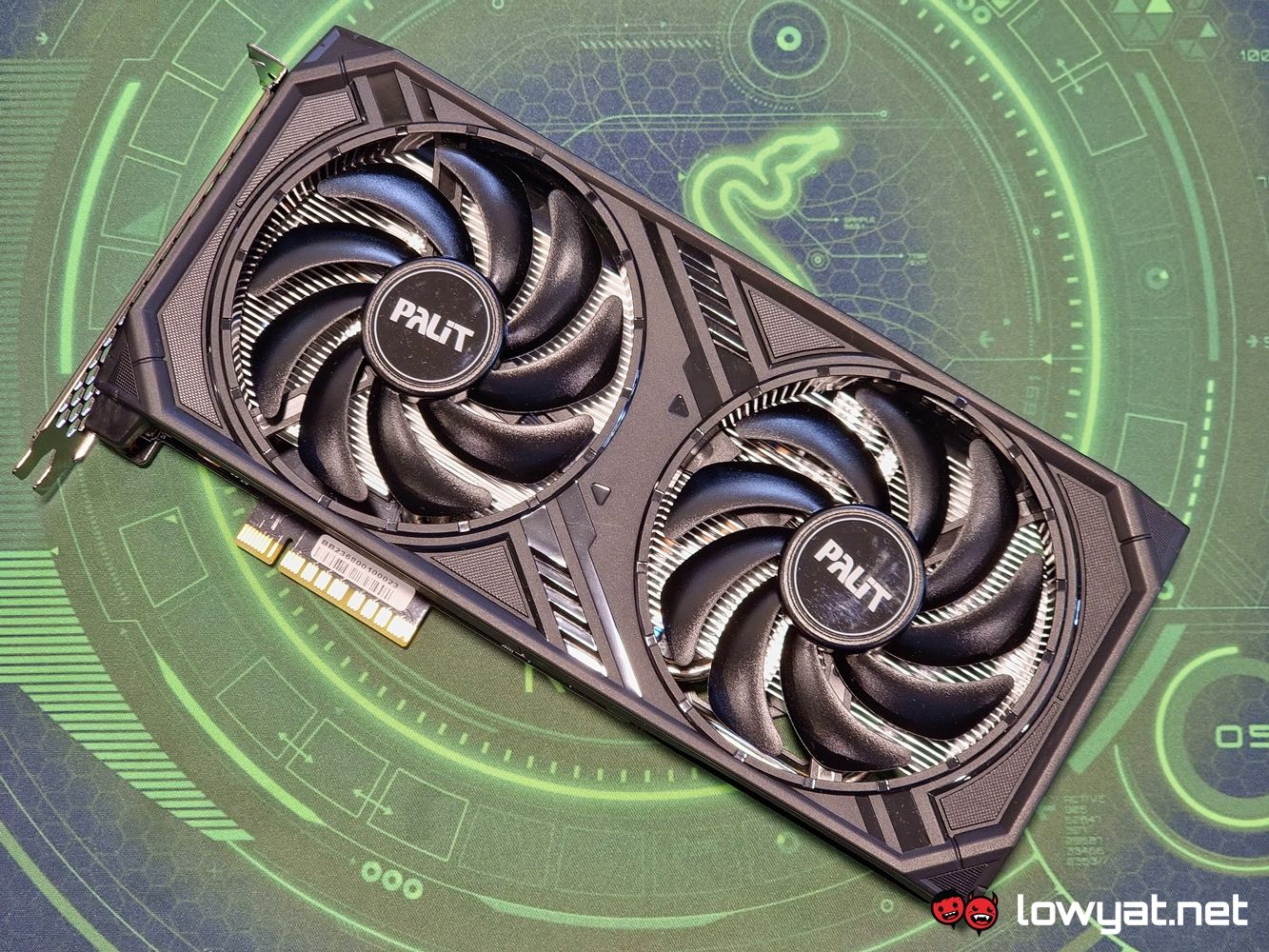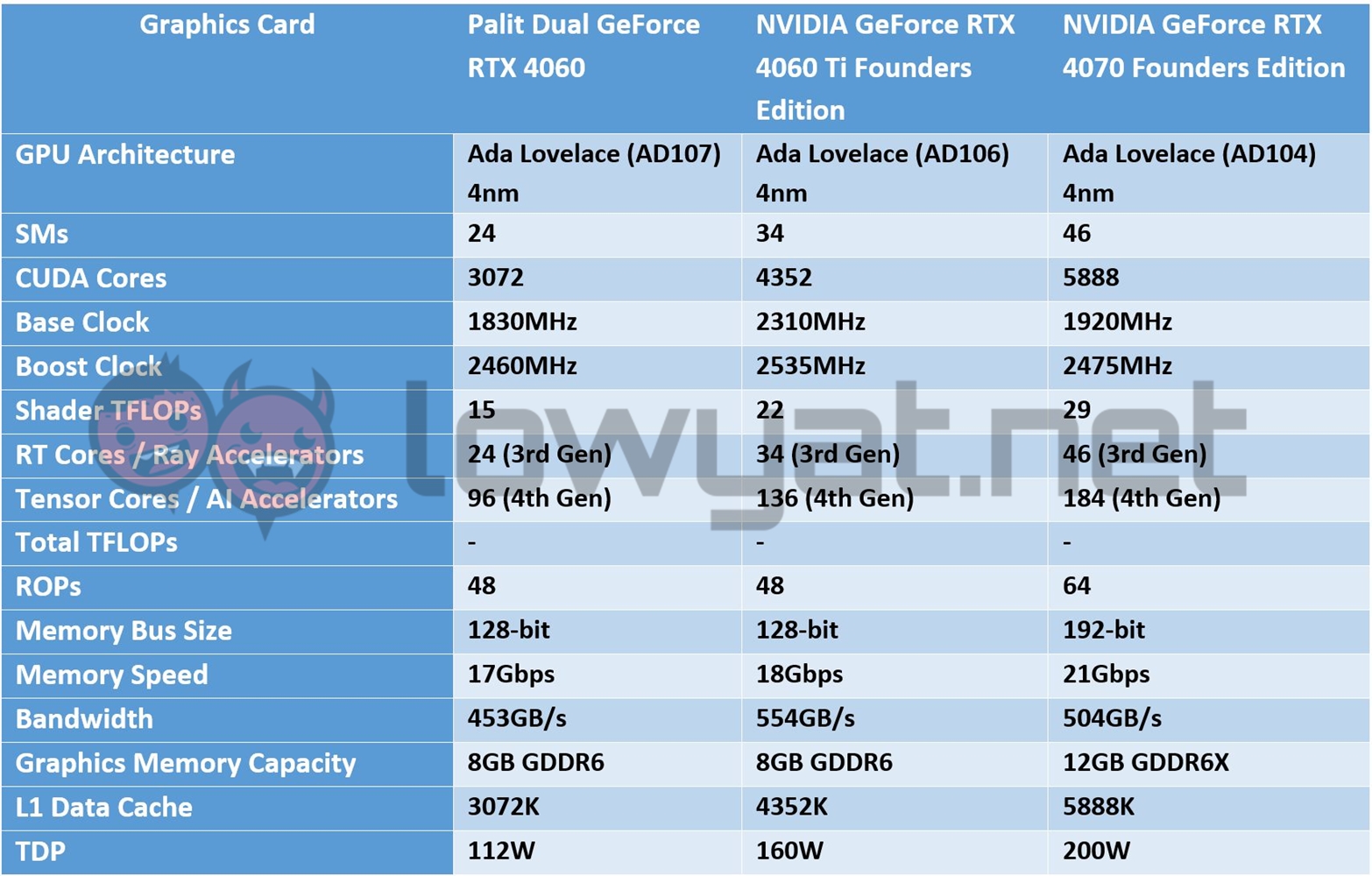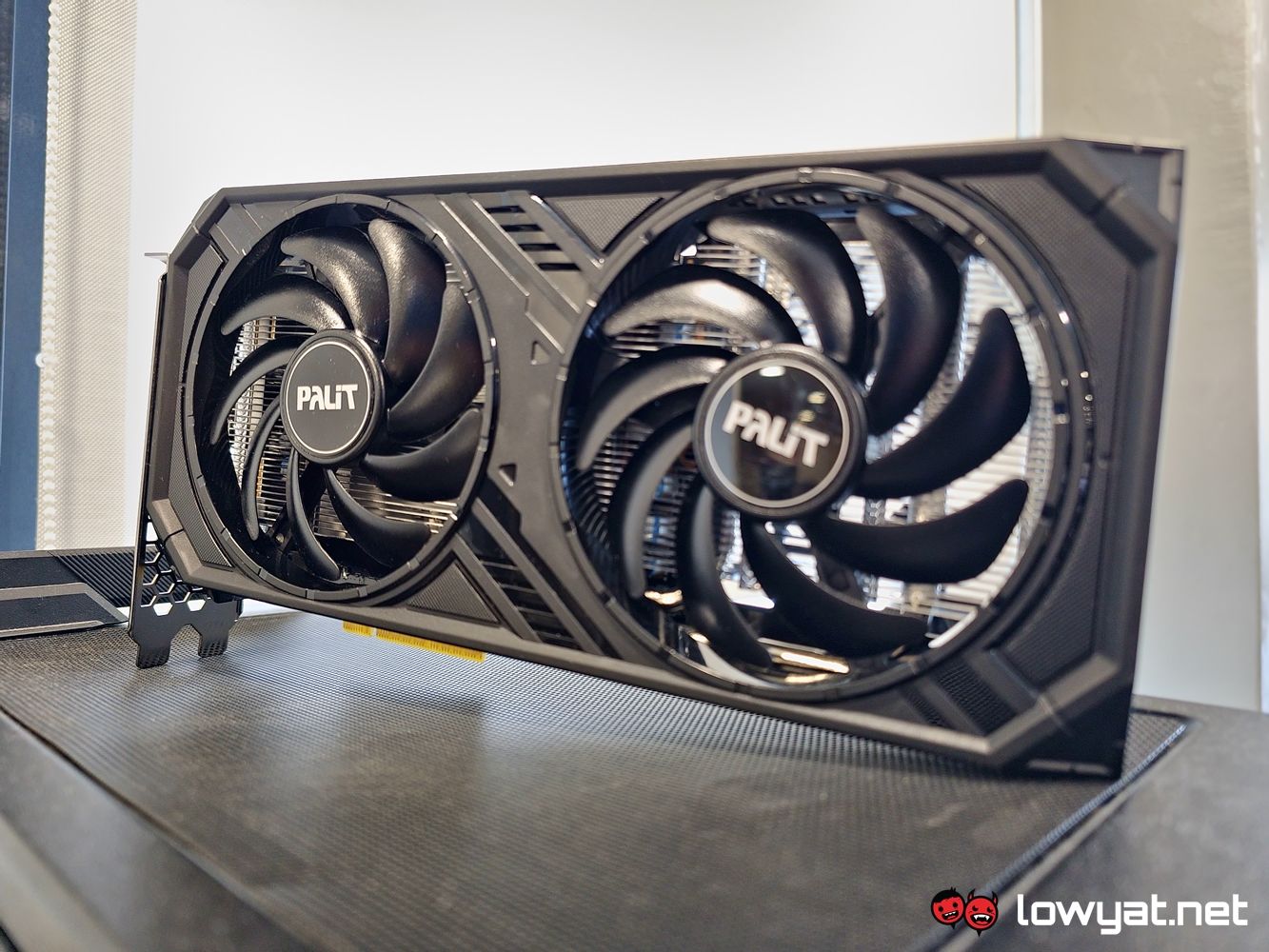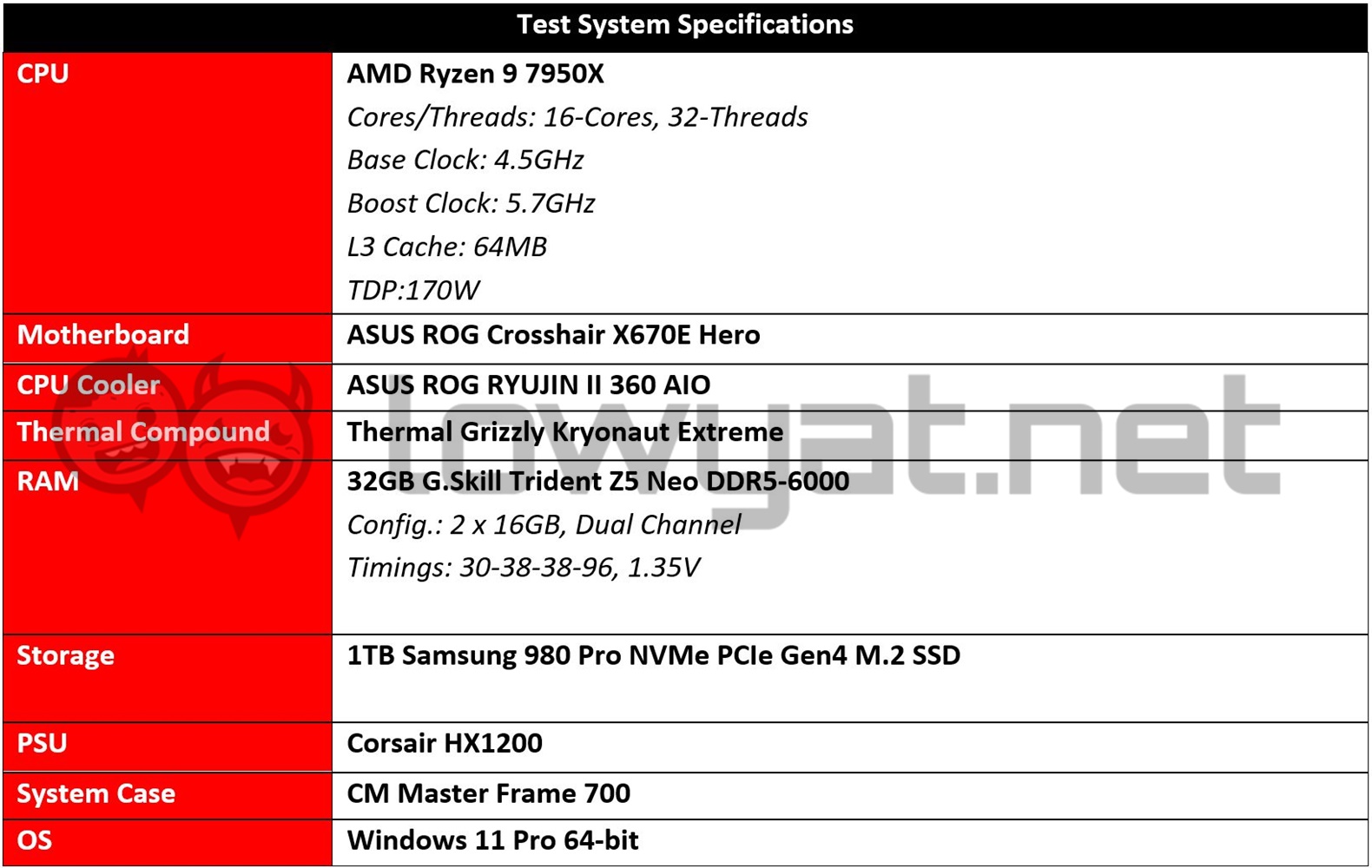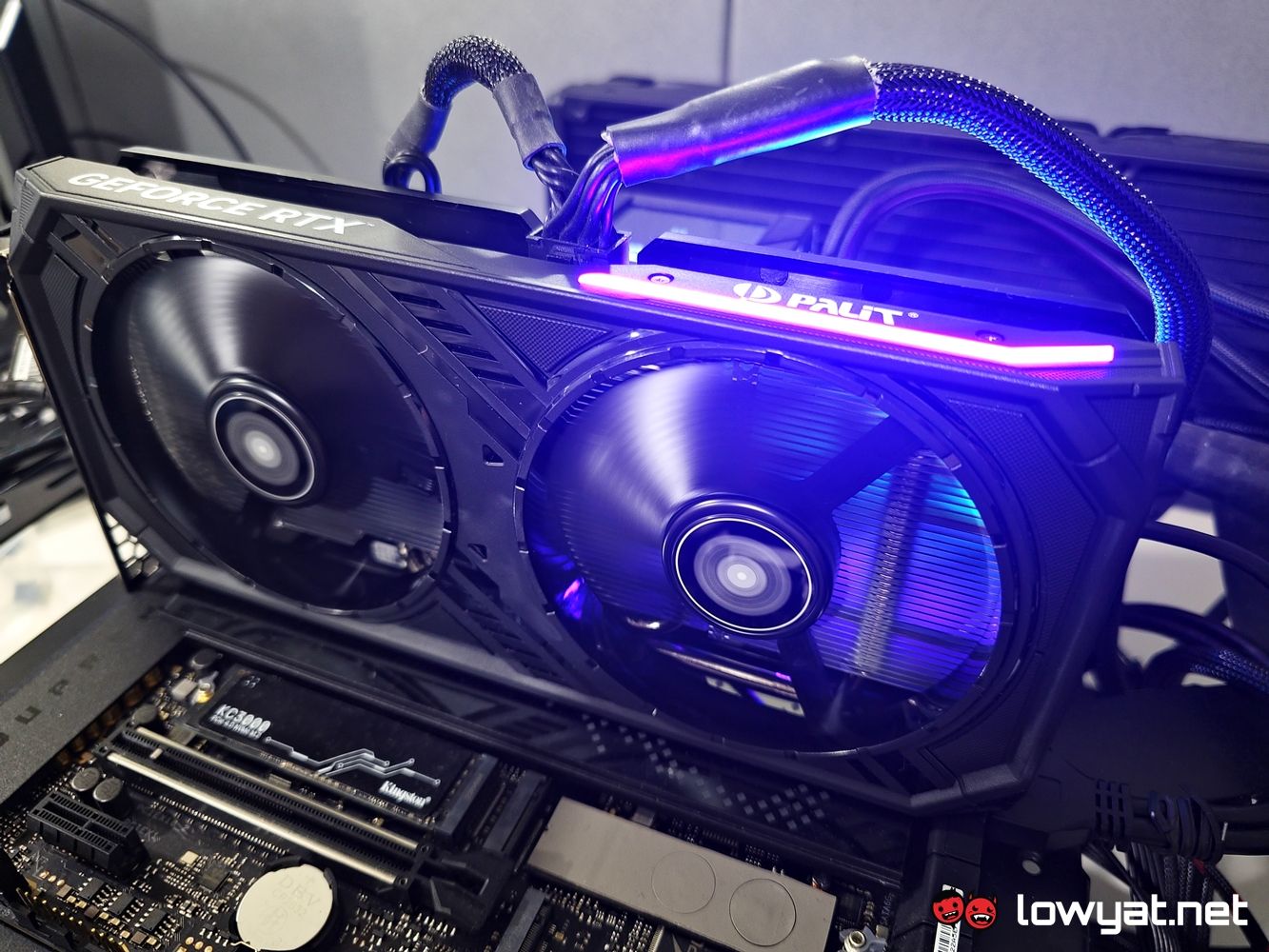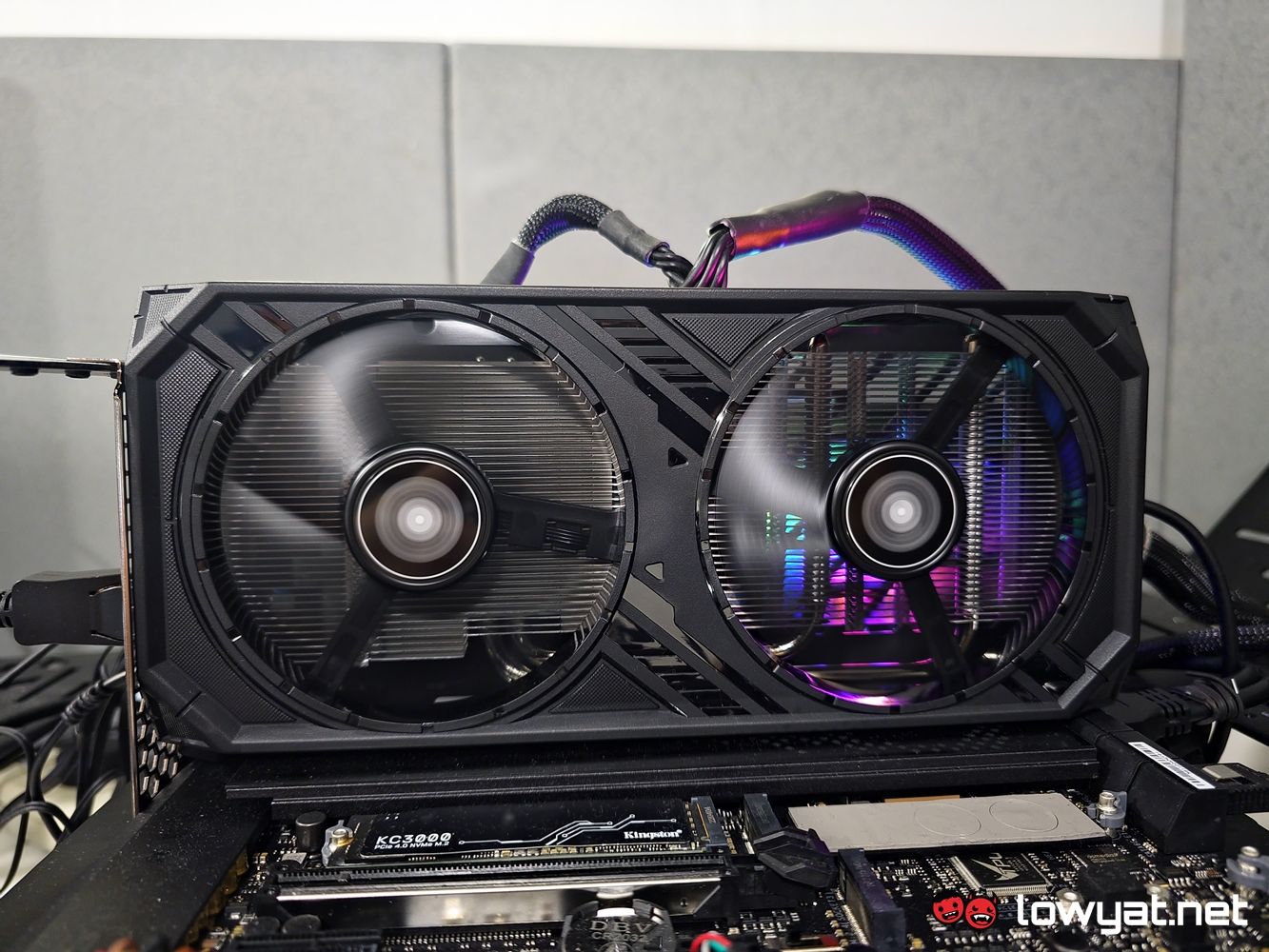The GeForce RTX 4060 was supposed to launch in July but in a surprising move, NVIDIA brought up the timetable by a whole month. As we kind of expected, the card doesn’t have a Founders Edition version, meaning that whatever unit we reviewers get is going to be from the brand’s AIB partners.
In our case, our review unit came straight from Palit, and the model in our hands is from the brand’s Dual series.
Specifications
The Looks Of It
Compared to Palit’s usual fare of cooler shroud designs, the Dual RTX 4060 that I have here isn’t garish and is, in fact, plain to look at. It sports a bog-standard square shroud, along with a typical dual-fan configuration that does support zero RPM technology, meaning that the fans won’t spin until the GPU reaches a certain temperature. In this case, it’s 55°C.
Like all brands, the schtick that makes the Dual RTX 4060 somewhat unique from its rivals is that you can actually customise the cover and backplate of the card with the use of a 3D printer, and there are even some pre-designed patterns that are ready to download. Of course, it goes without saying that you’re going to need to own a 3D Printer to…well, print out the shrouds, or perhaps you can befriend one of your friends that actually has said printer.
Aesthetics notwithstanding, the RTX 4060 is also the first card in NVIDIA’s Ada Lovelace lineup that goes back to basics with power delivery and by that, I mean that it merely requires a standard 8-pin PCIe power connector. That’s right, none of that 12VHPWR PCIE Gen5 nonsense here, and why would it: NVIDIA’s proprietary 16-pin PCIe Gen5 port is designed to channel up to 600W of power.
While cards like the RTX 4080 and 4090 may require such power, for the RTX 4060 and its meagre 112W TGP, it’s not a stretch to say that that is nothing short of overkill. Another thing that is unique about the Palit Dual RTX 4060 is that, unlike the other 4060s that I’ve seen, it has a much shorter PCIe connector.
The Testbench
So, in order to test the Palit Dual RTX 4060, my testbed comprises the AMD Ryzen 9 7950X that is paired with an X670E motherboard from ASUS, as well as a 360mm AIO cooler from the brand as well. For comparison’s sake, I’ll be keeping things simple and benching the card against its slightly more powerful Ti counterpart, as well as the RTX 4070. As for the gaming segment of my tests, I am including performance metrics from just 1440p and Full HD resolutions. 4K is not in the equation here because, let’s be honest, if you were planning on gaming at that resolution, you wouldn’t be looking at this card.
Benchmarks, Power Draw, And Temperature
As you can see from the graphs, the RTX 4060 clearly plays catch up with its Ti counterpart virtually every step of the way, especially with the synthetic portion of the test. Again, this is technically the entry-level of “entry-levels”, and such levels of performance is, quite honestly, to be expected.
Synthetic benchmarks aside, where I think we really need to pay attention to the RTX 4060 is with gaming. Once again, the graphs all seem to tell the tale of an entry-level chasing after its bigger brother, but pay closer attention to the numbers and you’ll find that they tell a story that borders on an argument against the Ti variant of the card.
Of all the benchmark titles on my list, the only game that the RTX 4060 absolutely fails to maintain the 60 fps composure is Watch Dogs Legion, and is across both resolution. And sure, it’s a similar story for Cyberpunk at 1440p but at Full HD, the card, along with all the trappings warranted by the Ada Lovelace architecture, doesn’t even break a sweat at maintaining an average of 71 fps, and that’s with RTX set at the Psycho preset and DLSS 3.0 activated.
Then there are the other titles that the RTX 4060 absolutely crushed. Heck, in Doom Eternal the card overtook the 4060 Ti at 1440p resolution, but to be fair, that is a situation I was able to replicate again. On a somewhat related note, I can also confirm that the card is capable of running Diablo IV at native 4K resolution around the 50 fps average. With DLSS 3.0 active and set to Balanced, though, I get a much higher 90 fps average. That said, the game’s resolution is tied to your desktop’s native resolution and there is currently no way to change the in-game resolution, at current.
As for the power consumption and temperature of the Palit Dual RTX 4060, there isn’t anything out of the ordinary with both metrics, although I should note that this card draws slightly more power than the advertised consumption levels.
Conclusion
At a starting SRP of US$299 (~RM1395), and seeing how it is able to perform in the realm of Full HD gaming, it can be argued that the GeForce RTX 4060 is a more bang-for-your-buck GPU, especially when compared to its more powerful Ti sibling, and that’s not an exaggeration. It draws less power than the RTX 3060 or RTX 2060, it has access to DLSS 3 and Frame Generation, and because of the latter two factors, it can deliver higher-than-average frames in most games that support said features. The more impressive part of the card? Turn off those features, including ray-tracing, and the card delivers equal, if not higher average framerates.
But the prowess of the RTX 4060 does raise one particular issue in my mind, and that is the likelihood that this GPU might simply erode the sales of the RTX 4060 Ti. Again, it’s cheaper, and if you’re in the market for a modern budget GPU and you still want to stick with Team Green, then this is the card that should be set squarely in your sights. Otherwise, your only other option right now would be AMD’s own Radeon RX 7600.
Follow us on Instagram, Facebook, Twitter or Telegram for more updates and breaking news.


